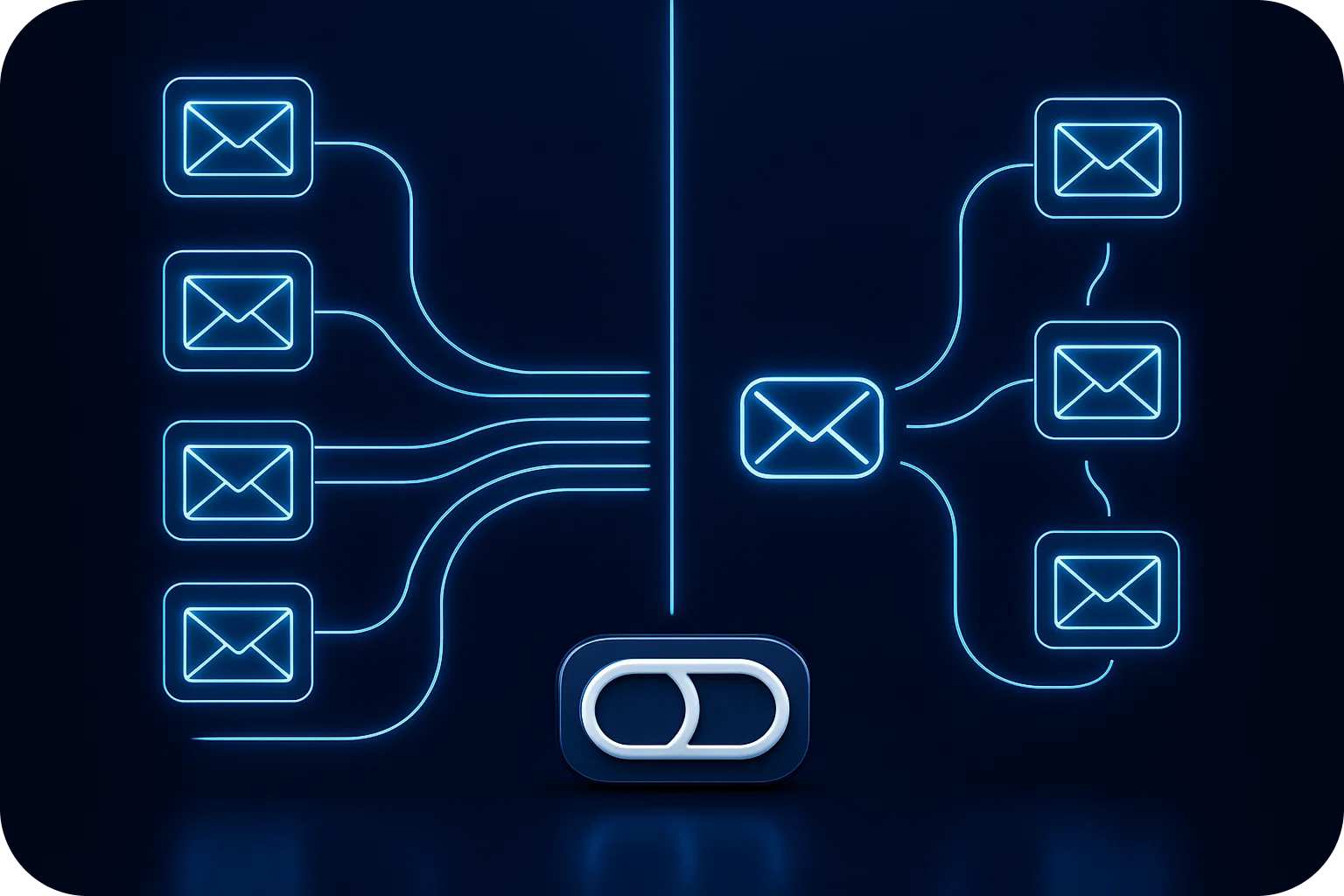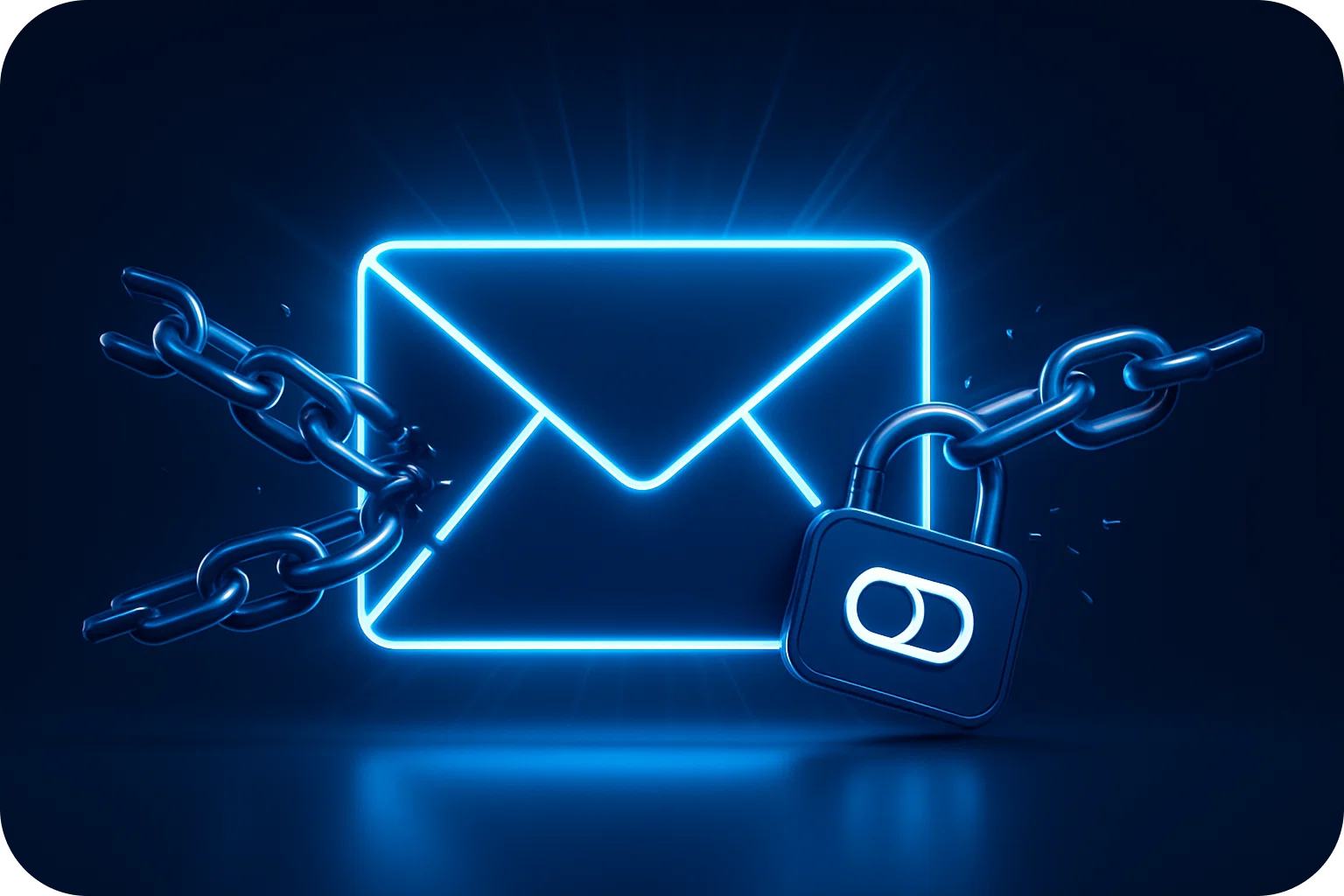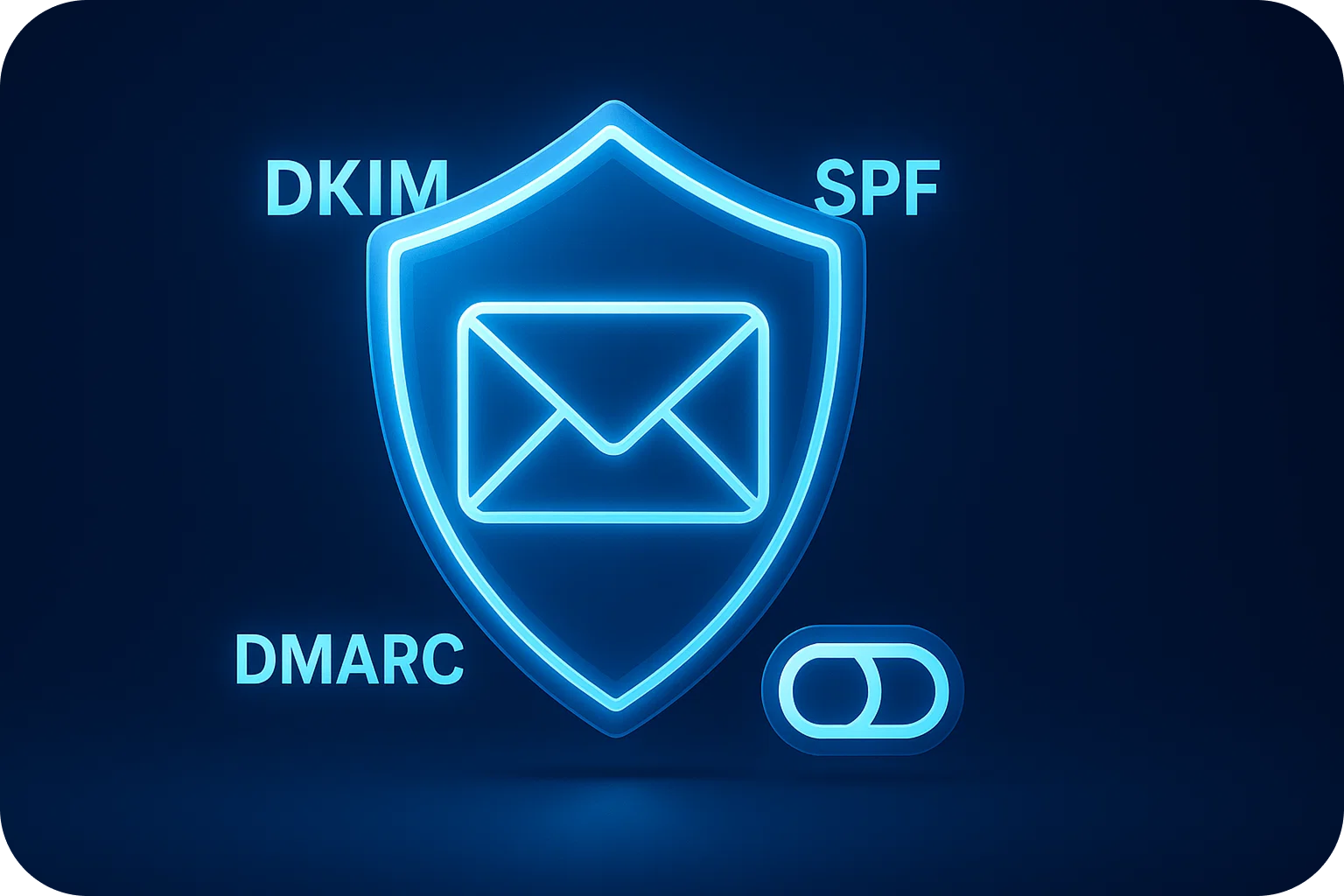Batch Sending vs. Drip Sending: Which Strategy Actually Wins for Cold Email

When it comes to cold email outreach, your sending pattern can make or break your campaign. Two primary strategies dominate the landscape: batch sending and drip sending. But which one actually delivers better results for deliverability, engagement, and conversions?
The answer isn't as straightforward as you might think. Both cold email tactics have their place in a successful outreach strategy, but understanding when and how to use each approach is critical for maximizing your campaign performance.
What Is Batch Sending?
Batch sending involves sending a large volume of emails simultaneously or within a short timeframe. Think of it as releasing all your messages at once to your entire prospect list.
This approach is often favored by teams looking to reach maximum prospects quickly, especially when announcing time-sensitive offers, product launches, or limited-time promotions. The appeal is obvious: you can contact hundreds or thousands of prospects in minutes rather than days.
However, batch sending comes with significant risks that many sales teams overlook until it's too late.
The Risks of Batch Sending
Email service providers like Gmail and Outlook are sophisticated. They monitor sending patterns closely, and sudden spikes in email volume trigger red flags. When you send 500 emails in 30 minutes from an inbox that normally sends 20 per day, you're essentially announcing to spam filters that something unusual is happening.
The consequences can be severe:
- Immediate deliverability drops: Your emails may land in spam folders or get blocked entirely
- Domain reputation damage: A single batch sending mistake can hurt your sender reputation for weeks
- Account suspension: Email providers may temporarily or permanently suspend accounts exhibiting suspicious sending behavior
- Lower engagement rates: Even if your emails reach inboxes, recipients may perceive mass emails as spam
For most cold email campaigns, batch sending is a high-risk strategy that rarely justifies the potential damage to your email infrastructure.
What Is Drip Sending?
Drip sending distributes your emails gradually over an extended period, mimicking natural human sending behavior. Instead of blasting 500 emails at once, you might send 20-30 emails per inbox per day, spread throughout business hours.
This cold email tactic aligns with how email providers expect legitimate business communication to flow. It's the foundation of sustainable, scalable cold outreach that maintains high deliverability rates over time.
Why Drip Sending Works
Drip sending succeeds because it respects the unwritten rules of email deliverability. Email providers don't just look at what you send—they analyze how you send it.
Key advantages include:
- Natural sending patterns: Gradual email distribution appears legitimate to spam filters
- Sustained deliverability: Consistent sending volumes help maintain strong sender reputation
- Better engagement tracking: Spreading sends over time allows you to monitor responses and adjust campaigns in real-time
- Reduced spam complaints: Recipients are less likely to mark emails as spam when they arrive at natural intervals
- Improved personalization opportunities: Time between sends allows for dynamic adjustments based on prospect behavior
The most successful cold email campaigns use drip sending as their default strategy, reserving batch tactics only for specific, carefully planned scenarios.
The Deliverability Factor: Why Sending Pattern Matters
Deliverability is the foundation of cold email success. If your messages don't reach inboxes, nothing else matters, not your compelling subject lines, not your personalized copy, not your irresistible offer.
Email providers use complex algorithms to evaluate sender behavior. These systems consider dozens of factors, but sending pattern ranks among the most critical. Sudden volume spikes, irregular timing, and robotic consistency all signal potential spam activity.
Optimal Sending Volume Guidelines
Industry best practices recommend:
- Maximum 100 emails per inbox per day (though 20-30 is ideal for new accounts)
- Maximum 3-5 inboxes per domain to distribute sending load
- 3-4 week warm-up period before reaching full sending capacity
- Randomized send times within business hours to mimic human behavior
These guidelines aren't arbitrary, they're based on what email providers consider normal business communication patterns. Violating these principles with aggressive batch sending can destroy months of reputation-building in a single day.
Engagement and Conversion: The Real Performance Test
Beyond deliverability, the ultimate measure of any cold email tactic is whether it drives responses and conversions. Here's where the batch vs. drip debate gets interesting.
Batch Sending Performance
In rare cases, batch sending can generate quick results for time-sensitive campaigns. However, the engagement quality typically suffers. Recipients may perceive batch emails as impersonal mass marketing, reducing response rates even when messages reach inboxes.
Batch campaigns also lack flexibility. Once sent, you cannot adjust messaging based on early feedback or market response. If your offer misses the mark or your subject line underperforms, you've already burned through your entire prospect list.
Drip Sending Performance
Drip campaigns consistently outperform batch sending in engagement metrics. The gradual approach allows for:
- A/B testing: Test subject lines, messaging, and offers on small segments before full deployment
- Real-time optimization: Adjust campaigns based on early response patterns
- Behavioral triggers: Send follow-ups based on recipient actions (opens, clicks, website visits)
- Personalization at scale: Incorporate dynamic content based on prospect research
Companies using drip sending report 20-40% higher response rates compared to batch campaigns, with significantly better conversion quality. Prospects engaged through drip campaigns tend to be more qualified and sales-ready.
When Batch Sending Might Make Sense
Despite its drawbacks, batch sending isn't always wrong. Specific scenarios may justify the approach:
- Event announcements: Webinar invitations or conference notifications with fixed deadlines
- Product launches: Time-sensitive announcements where simultaneous reach matters
- Internal communications: Company-wide updates to existing contacts (not cold prospects)
- Re-engagement campaigns: Reaching dormant contacts who previously engaged with your brand
Even in these cases, smart marketers use modified batch approaches—spreading sends over several hours rather than minutes, and never exceeding recommended daily volume limits per inbox.
Building a Winning Cold Email Strategy
The most effective cold email campaigns combine the best elements of both approaches within a drip framework.
Start with Infrastructure
Before choosing a sending pattern, ensure your email infrastructure can support sustained outreach:
- Multiple email accounts: Distribute sending across 3-5 inboxes per domain
- Proper DNS configuration: Set up SPF, DKIM, and DMARC records correctly
- Warm-up protocols: Gradually increase sending volume over 3-4 weeks
- Dedicated domains: Use separate domains for cold outreach vs. operational emails
Platforms like Mailpool automate these infrastructure requirements, enabling teams to achieve 98% deliverability rates while scaling to 100x their previous sending capacity.
Implement Smart Drip Sequences
Design your drip campaigns with these principles:
- Segment your audience: Group prospects by industry, role, or pain point for targeted messaging
- Stagger your sends: Distribute emails throughout business hours with randomized timing
- Plan multi-touch sequences: Design 3-5 email follow-ups spaced 2-4 days apart
- Monitor and adjust: Track deliverability and engagement metrics daily
Scale Responsibly
As your campaigns succeed, resist the temptation to accelerate too quickly. Sustainable growth means:
- Adding new sending accounts gradually
- Maintaining consistent daily volumes per inbox
- Continuously monitoring sender reputation scores
- Adjusting strategies based on deliverability data
The Verdict: Drip Sending Wins for Cold Email
For the vast majority of cold email campaigns, drip sending is the clear winner. It protects deliverability, enables optimization, and drives higher-quality engagement, all while supporting sustainable scaling.
Batch sending may offer short-term speed advantages, but the long-term costs to sender reputation and campaign performance make it a poor choice for most scenarios. The few situations where batch tactics make sense can usually be handled through modified drip approaches that maintain volume discipline.
Success in cold email isn't about reaching the most prospects fastest, it's about consistently reaching the right prospects with messages that land in inboxes and drive meaningful conversations. Drip sending delivers on all these fronts.
If you're serious about scaling your cold outreach while maintaining elite deliverability rates, your sending pattern matters as much as your message. Choose drip sending, build proper infrastructure, and watch your conversion rates climb while your competitors struggle with spam folder oblivion.
More articles
Get started now




%201.png)





